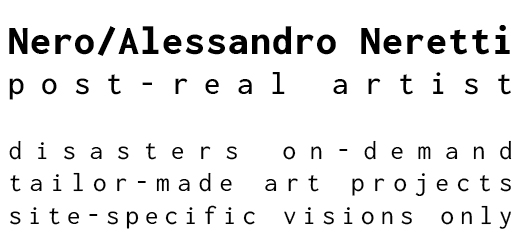The things that we’ve never seen with our skin or the storm, the sun, the snow
NICARP
Langkawi Space
Nami Island/ROK
2013
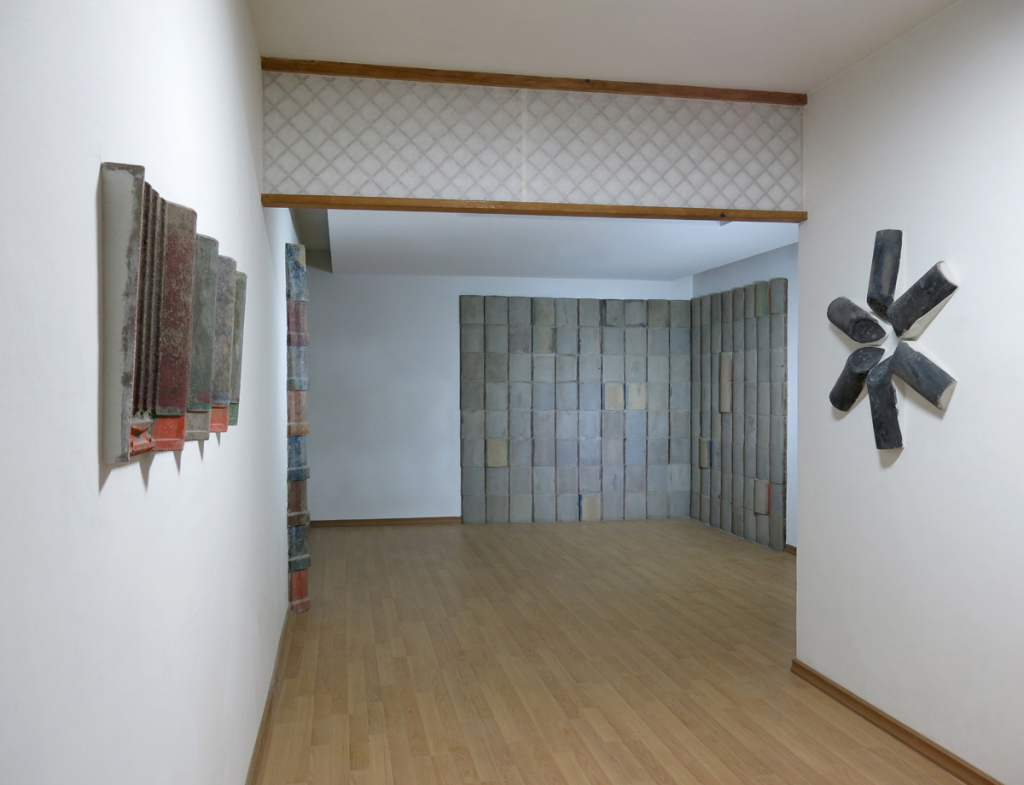
the things that we’ve never seen with our skin or the storm, the sun, the snow, 2013 | recycled kiwa, cement | ambient dimension
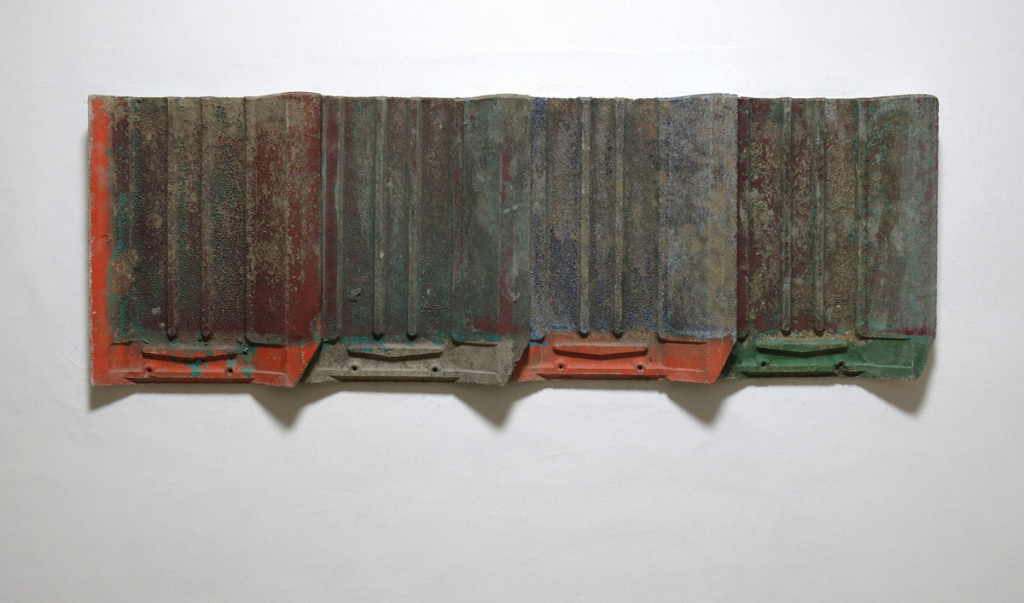
how many seasons we have heard, 2013 | concrete recycled old kiwa, cement | cm 126,5 x 43 x 8,5
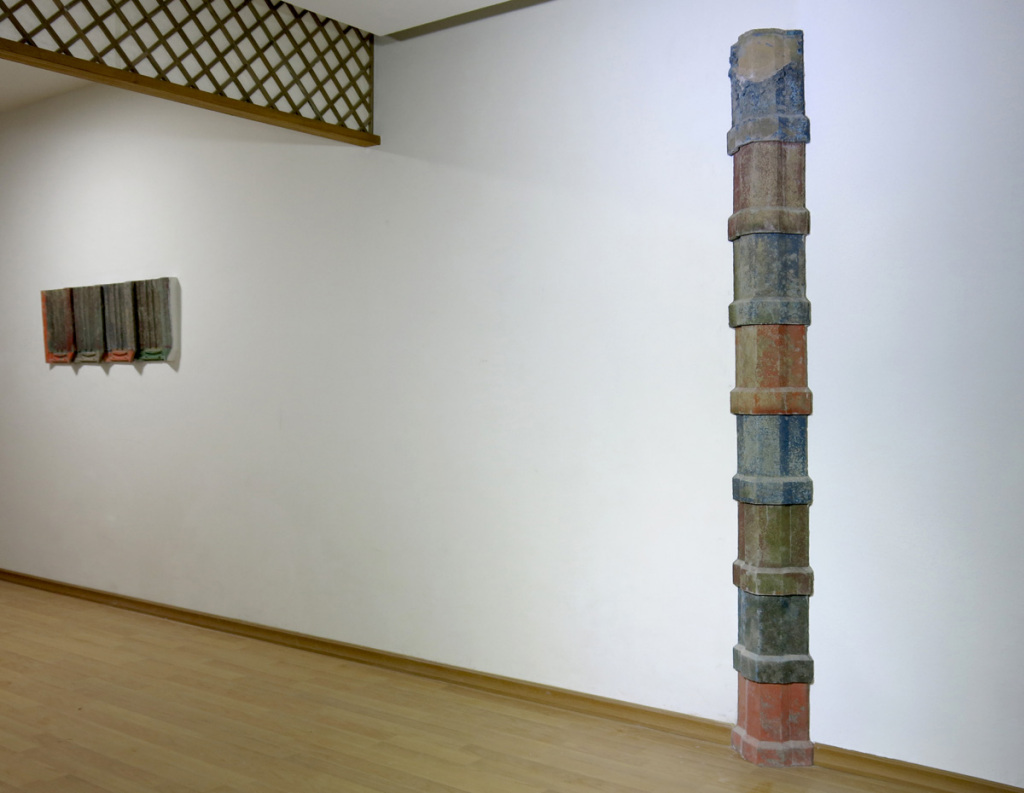
problems always come in the end, 2013 | concrete recycled old kiwa, cement | cm 29 x 238 x 14,5
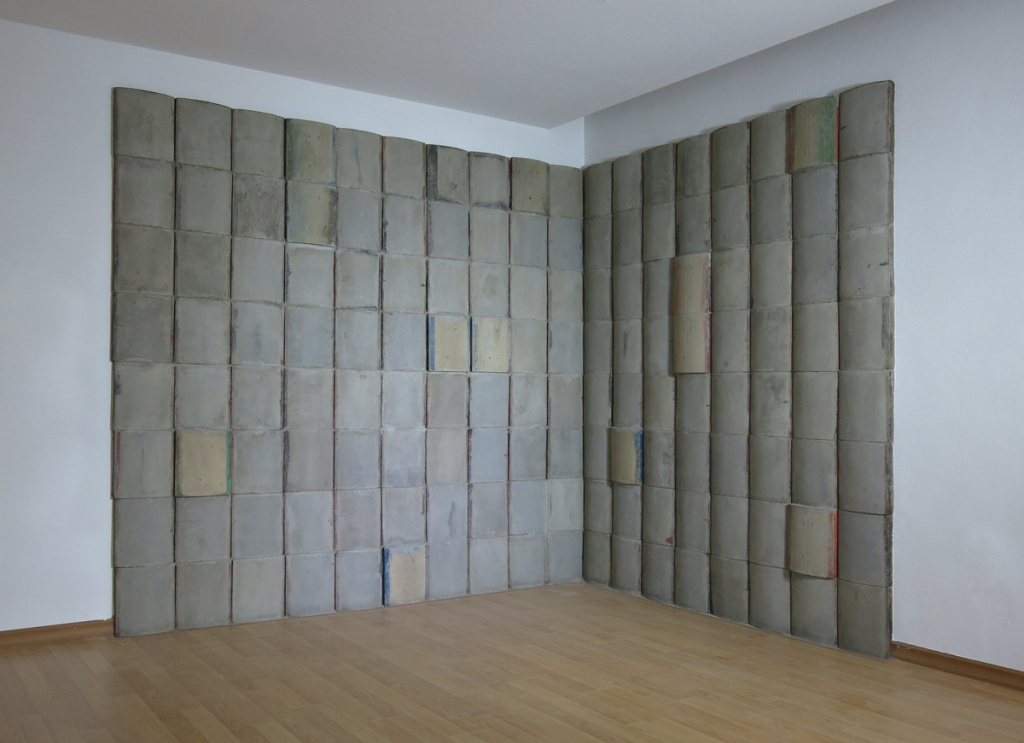
I’m getting old, 2013 | concrete recycled old kiwa, cement | cm 325 x 255 x 204
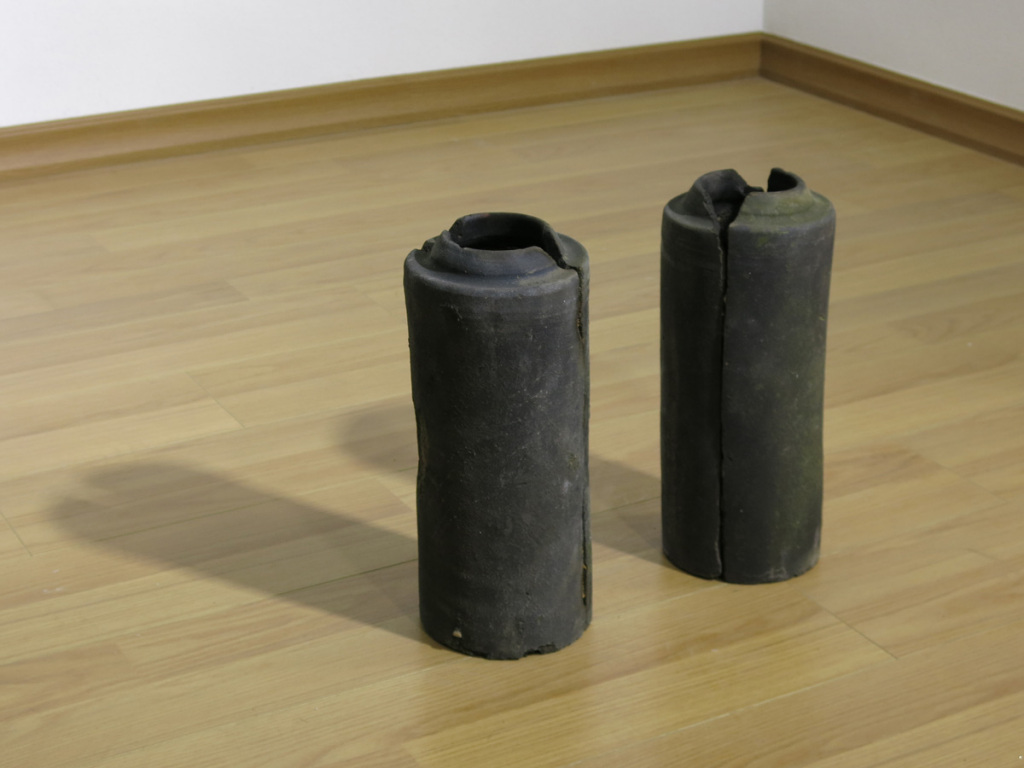
sisters with still warm skeleton, 2013 | earthenware recycled old kiwa, polyurethane | cm 42 x 13 x 57
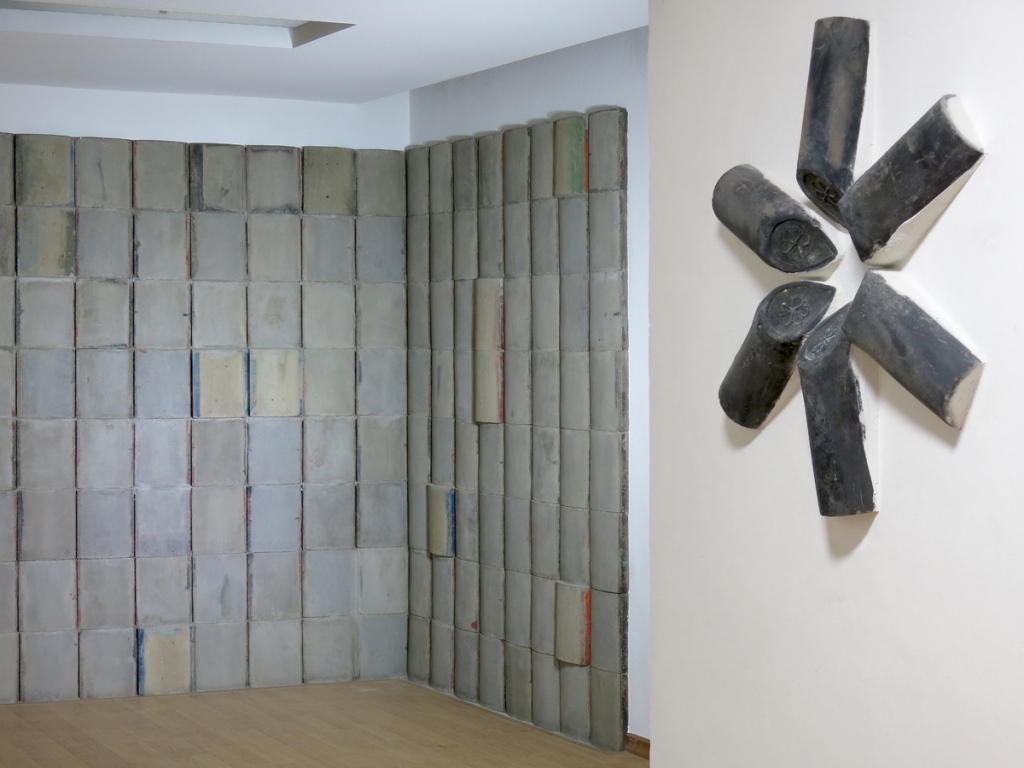
exhibition view | I’m getting old, 2013 (R) and black section, 2013 (L)
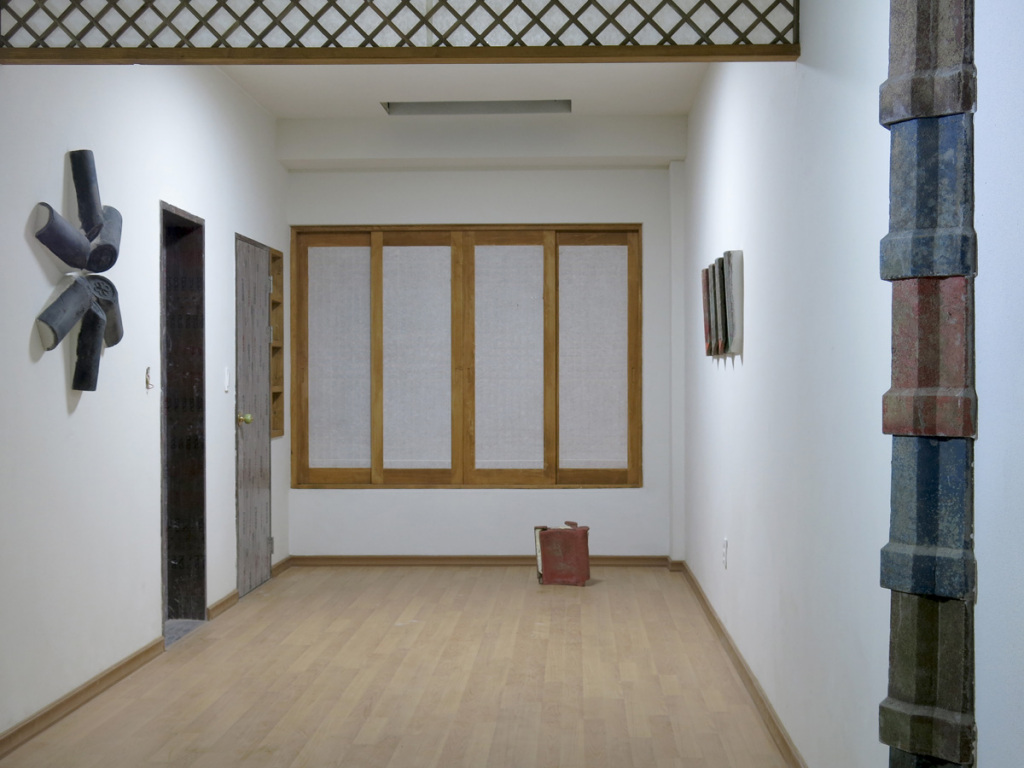
exhibition view | Langkawi Space
Text extracted from:
Ceramics according to Nero, i.e. going back to collective imagination
Irene Biolchini
In the first works title provided meaning to waste materials, similar is the procedure the artist put into place in the more resent Korean works. In Sisters with Still Warm Skeleton, the sisters the title refers to are clearly represented by the two cylindrical sculptures that are contained in the work. The two sisters, or rather the twin sisters, remind to NY Twin Towers immediately in our collective consciousness. They two been created by sticking together an cient Korean tiles by means of polyurethane foam. By way of the artist’s gesture, our collective imagination blends together with Korean collective culture and with their ancient tradition of tiles (kiwa) used in house building.
Unlike in the first works where the signifier in the title clashed with the meaning of the object trouvè, in Sisters with Still Warm Skeleton the very waste materials become a referent. That represents a community,the Korean one, that is willingly related to one of the most considerable events of the west collective consciousness.
Text extracted from:
Materials and non-materials
Elena Magini
A range of works that Nero created with recycled kiwa (traditional Korean tiles) and cement and polyurethane merge into The things that we’ve never seen with our skin or the storm, the sun, the snow, which is a permanent art installation at NICARP. In this case Nero deals with altering ready made things (practice that was already used by Nero who focuses on providing objects with new and different meaning than the one they are made for).
The multicoloured original tiles are used to recreate geometric ornamental patterns. Nero approaches architectural objects by setting them in a different context than the regular one, which amplifies their symbolism. Neretti takes materials as a kind of “skin”, a sort of borderline or barrier, a common element that separates outside and inside, that screens out atmospheric agents. By displacing the tiles inside, in a place dedicated to art, Nero denies their original architectural function and opens up to looking at their shape and function afresh. Here Nero applies the same kind of manipulating and deforming action that he usually applies to images to objects: he is especially interested in creating something new that changes the primal idea of the object. The output are undefined and unstable structures.
